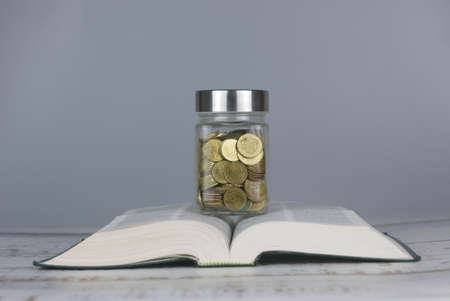1. Introduction: Why an Emergency Fund Matters
Life is full of surprises, and not all of them are pleasant. An unexpected medical bill, a sudden job loss, or a major car repair can throw your finances into chaos if youre not prepared. This is where an emergency fund comes in. Having a financial cushion set aside for these unforeseen expenses can make all the difference between staying afloat and falling into debt.
How an Emergency Fund Provides Financial Security
An emergency fund acts as a safety net, giving you peace of mind and financial stability during tough times. Here’s how it helps:
(1) Covers Unexpected Expenses
From medical emergencies to home repairs, life can hit you with surprise costs at any moment. An emergency fund ensures that you don’t have to rely on credit cards or loans to handle these situations.
(2) Prevents Debt Accumulation
Without savings, many people turn to high-interest loans or credit cards to cover emergencies. This can lead to debt that takes years to pay off. Having cash set aside eliminates this risk.
(3) Provides Financial Independence
If you suddenly lose your job or face income disruption, an emergency fund allows you to cover essential expenses without borrowing money or asking for help.
How Much Should You Save?
The general recommendation is to save three to six months’ worth of living expenses in your emergency fund. However, the right amount depends on your personal situation.
| Situation | Recommended Savings |
|---|---|
| Single with no dependents | At least 3 months of expenses |
| Married with children | At least 6 months of expenses |
| Self-employed or freelancer | 6-12 months of expenses |
| Main provider for household | 6-12 months of expenses |
The Bottom Line
An emergency fund is not just a nice-to-have—it’s a necessity. It protects you from financial stress and helps you navigate life’s uncertainties with confidence. In the next section, well discuss how to start building your own emergency fund step by step.
2. How Much Should You Save?
Building an emergency fund is essential, but how much should you actually set aside? The answer depends on your income, expenses, and financial obligations. A good rule of thumb is to have at least three to six months’ worth of living expenses saved. However, individual circumstances may require adjustments.
Factors to Consider
(1) Monthly Expenses
Start by calculating your essential monthly expenses, including rent or mortgage, utilities, groceries, insurance, transportation, and minimum debt payments.
(2) Job Stability
If you have a stable job with a steady income, three months worth of expenses might be sufficient. However, if your job is unpredictable or youre self-employed, aim for six months or more.
(3) Dependents
If you have children or other dependents relying on your income, you may need a larger emergency fund to cover unexpected costs such as medical bills or childcare.
(4) Health and Insurance Coverage
If you have comprehensive health and disability insurance, your emergency savings needs may be lower. However, if you lack coverage or have high deductibles, consider saving extra for potential medical emergencies.
Suggested Savings Amounts
| Income Level | Recommended Emergency Fund |
|---|---|
| $30,000 – $50,000 | $7,500 – $15,000 |
| $50,000 – $75,000 | $12,500 – $22,500 |
| $75,000 – $100,000 | $18,750 – $30,000 |
| $100,000+ | $25,000+ |
How to Reach Your Goal
(1) Set a Monthly Savings Target
Aim to save a percentage of your income each month. Even small contributions add up over time.
(2) Automate Your Savings
Set up automatic transfers to your emergency fund so that saving becomes effortless.
(3) Cut Unnecessary Expenses
Review your budget and eliminate non-essential spending to boost your savings rate.
![]()
3. Where to Keep Your Emergency Fund
Once youve built your emergency fund, the next step is deciding where to store it. You want a place that keeps your money safe, easily accessible, and ideally earns some interest. Below are some of the best options for storing your emergency fund.
High-Yield Savings Accounts
A high-yield savings account is one of the best places to keep your emergency fund. These accounts offer higher interest rates than traditional savings accounts while still providing easy access to your money when you need it.
Benefits of High-Yield Savings Accounts
- Higher interest rates compared to regular savings accounts
- FDIC-insured up to $250,000 per depositor
- Easy access while still keeping funds separate from everyday spending
Money Market Accounts
A money market account is another solid option for storing your emergency fund. These accounts typically offer competitive interest rates and may come with check-writing or debit card privileges.
Advantages of Money Market Accounts
- Higher interest rates than standard savings accounts
- FDIC-insured protection
- Limited check-writing or debit card access for emergencies
Comparison of Emergency Fund Storage Options
| Option | Interest Rate | Liquidity | FDIC Insurance |
|---|---|---|---|
| High-Yield Savings Account | High | Easy access, but not linked to daily spending | Yes, up to $250,000 |
| Money Market Account | Slightly higher than savings accounts | Larger withdrawals may have restrictions | Yes, up to $250,000 |
Avoid Keeping Emergency Funds in Risky Investments
Your emergency fund should be readily available when you need it. While investments like stocks or real estate may offer higher returns, they come with risks and potential delays in accessing your money.
(1) Stocks & Mutual Funds
The stock market can be volatile, meaning your emergency savings could lose value right when you need them most.
(2) Certificates of Deposit (CDs)
A CD may offer higher interest rates but usually comes with early withdrawal penalties if you need access before the term ends.
(3) Real Estate & Physical Assets
Selling property or assets takes time and isn’t ideal for emergency situations.
Selecting the right place for your emergency fund ensures you have quick access to cash when unexpected expenses arise. Consider a combination of high-yield savings and money market accounts for the best balance of security and accessibility.
4. Strategies to Build Your Emergency Fund
Building an emergency fund may seem challenging, but with the right strategies, you can grow your savings consistently. By budgeting wisely, cutting unnecessary expenses, and automating your savings, you can create a financial safety net for unexpected situations.
Budgeting to Prioritize Savings
The first step in building an emergency fund is creating a budget that prioritizes saving. A well-structured budget helps you track income and expenses while ensuring a portion of your earnings goes directly into your emergency fund.
(1) Use the 50/30/20 Rule
This budgeting method helps allocate your income effectively:
| Category | Percentage | Description |
|---|---|---|
| Needs | 50% | Essential expenses like rent, utilities, groceries, and transportation. |
| Wants | 30% | Non-essential spending like entertainment, dining out, and shopping. |
| Savings & Debt Repayment | 20% | Emergency fund contributions, retirement savings, and paying off debt. |
(2) Track Your Expenses
Monitor where your money is going by using budgeting apps or a simple spreadsheet. Identifying areas where you overspend allows you to adjust and redirect funds toward your emergency savings.
Cutting Unnecessary Expenses
If you’re struggling to find extra money to save, cutting unnecessary expenses can free up funds for your emergency account.
(1) Reduce Subscription Services
Review all your subscriptions (streaming services, gym memberships, meal kits) and cancel those you don’t use frequently.
(2) Cook at Home More Often
Dine out less and prepare meals at home to save significantly on food expenses.
(3) Shop Smart
Use coupons, buy generic brands, and take advantage of sales to reduce grocery and household costs.
Automating Your Savings
A great way to ensure consistent growth in your emergency fund is by automating the process so that saving becomes effortless.
(1) Set Up Automatic Transfers
Arrange for a portion of your paycheck to be automatically transferred to your emergency fund each month. This “pay yourself first” approach ensures saving is a priority.
(2) Use Round-Up Savings Apps
Certain banking apps round up your purchases to the nearest dollar and deposit the difference into a savings account. Over time, these small amounts add up.
(3) Take Advantage of Windfalls
If you receive unexpected money (tax refunds, bonuses, gifts), set aside a portion for your emergency fund instead of spending it immediately.
5. When and How to Use Your Emergency Fund
Defining Legitimate Emergency Expenses
Your emergency fund should only be used for true emergencies—unexpected expenses that are urgent, necessary, and unavoidable. To help you determine what qualifies, here are some examples:
| Category | Examples |
|---|---|
| Medical Emergencies | Unexpected surgeries, ER visits, or urgent medical treatments not covered by insurance. |
| Job Loss | Covers essential living expenses like rent, utilities, and groceries while searching for a new job. |
| Major Car Repairs | If your car breaks down and is essential for commuting to work. |
| Home Repairs | Urgent repairs like a leaking roof or broken heater in winter. |
| Family Emergencies | Crisis situations such as travel costs for a funeral or helping a dependent in need. |
How to Use Your Emergency Fund Wisely
If you need to use your emergency fund, follow these steps to ensure its managed effectively:
(1) Assess the Situation Carefully
Avoid dipping into your fund for non-essential expenses. Ask yourself: Is this truly an emergency? Can it wait?
(2) Withdraw Only What You Need
If you must use the fund, withdraw just enough to cover the expense instead of depleting the entire balance.
(3) Look for Alternative Solutions First
If possible, negotiate payment plans, use insurance benefits, or seek financial assistance before using your savings.
How to Replenish Your Emergency Fund After Using It
The key to maintaining financial security is rebuilding your emergency fund as soon as possible. Here’s how:
(1) Adjust Your Budget
Tighten discretionary spending on non-essentials like dining out or subscriptions until youve replenished the fund.
(2) Set Up Automatic Transfers
Create an automated system that transfers a fixed amount from each paycheck into your emergency savings.
(3) Allocate Windfalls or Bonuses
If you receive a tax refund, work bonus, or unexpected income, direct a portion of it toward replenishing your fund.
(4) Consider Temporary Side Income
Pursuing freelance work or selling unused items can accelerate the rebuilding process without disrupting your budget.
Your emergency fund is there to provide peace of mind during lifes uncertainties. By using it wisely and replenishing it promptly, you ensure ongoing financial stability and preparedness for whatever comes next.


